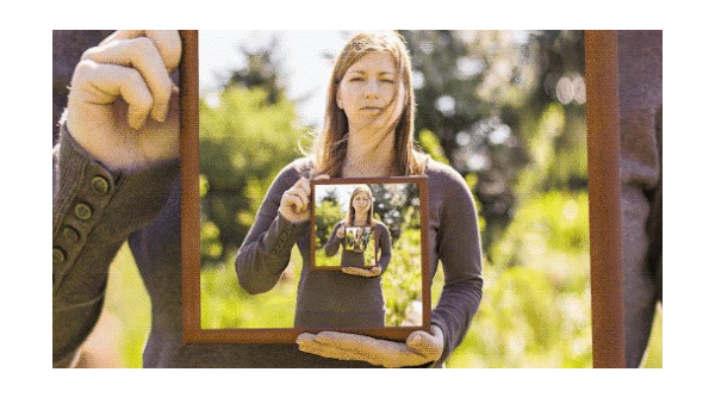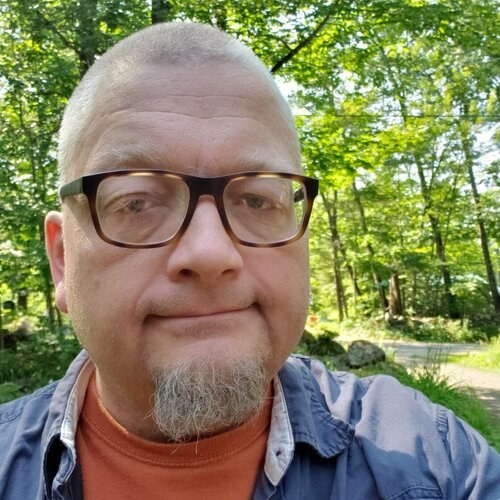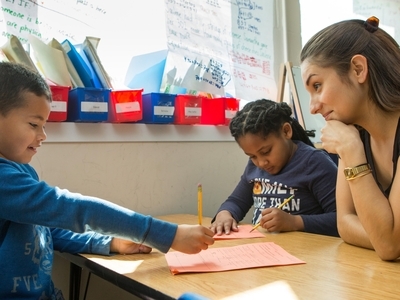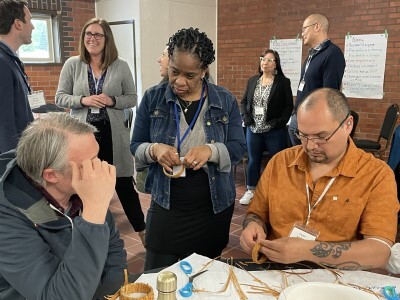Control, Innovation, and Scale in Our Public School System
Topics

Next generation learning is all about everyone in the system—from students through teachers to policymakers—taking charge of their own learning, development, and work. That doesn’t happen by forcing change through mandates and compliance. It happens by creating the environment and the equity of opportunity for everyone in the system to do their best possible work.
We're thinking about scale the wrong way and we can't build an ethical and just education system by scaling up.
At a gathering of the National Council of Urban Education Associations (NCUEA) in Los Angeles this week there was an abundance of conversation—inspiring in both quality and quantity—about change that needs to move through our education system. Decolonizing the system. Turning off the gas lights and allowing teachers and students to form a conspiracy of genuine, joyful learning with anyone who wishes to unite in common cause. That’s what the union members were talking about.
“Yeah, but how’re we going to scale this?”
It’s a question we can’t avoid, especially at national-level events, and it’s a question that genuinely keeps me up at night. This time the question was asked casually during breakfast and led to boisterous conversation. It’s a legit question and there should be an answer for it.
We feel intuitively—and I’m including myself in this “we”—that scaling up a thing is doing the same thing bigger, or the same thing more. Some humans are having a great experience, therefore by scaling, more humans have that experience. More people will just have the same experience. We want to grow our successful pilot classroom to a pilot school, to a district, to the state. We want our successes to spread. And, we believe scaling is a fractal phenomenon where each level of the scale is the same as the previous. “As above, so below,” is the saying. It is untrue in two ways.
First, the different levels of the scale—classroom, school, district, etc.—are only the same for an observer standing above it all working on their Theory of Change or Five Year Strategic Plan. It’s a godlike position of control, which is an illusion and not something that exists in the actual world. The different levels of a “fractal” are not the same for the people who live within the fractal. That’s us. You can’t change the quantity of the experience without changing the quality of the experience.
Second, when we scale a thing up linearly—“We’ll do this with sixteen classrooms instead of two.”—its volume and weight scale up exponentially. If the systems supporting the thing being scaled are not improved then they won’t be able to support the weight of the change. Similarly, if you scale any social, organizational, or system change, but the system that supports it doesn’t improve, then the system, or the organization, or the change itself will be crushed under its own weight.
Think of medieval churches. It was impossible to build those giant Gothic cathedrals with the amazing stained glass until the architects figured out how to support the weight of the building itself (flying buttresses). Another example: a diamond the size of your fist would bring you tens of millions of dollars. A diamond the size of Jupiter would be collapsed in on itself by tremendous gravitational forces and form a black hole, leading, eventually, to the destruction of our solar system. Let’s not even talk about a 50 foot tall cat, which would just be a mess.
All I’m saying is that scale is complicated and has consequences.
You can’t change the quantity of the experience without changing the quality of the experience.
And while I would be the first to admit that all of the above is an analogy, I think it’s the right analogy as a guide for how we ought to scale educational change, and how we might fail. We have all felt that weight as an initiative spreads. A conversation with twenty teachers has more “weight” than a conversation with a team of three. The process of changing grading practices in a metropolitan district with hundreds of schools and hundreds of thousands of kids is “heavier” than doing the same in a district with one thousand kids and three small schools. Shifting practice with thirty teachers once is not the same as shifting practice with three teachers ten times.
As you scale up, an initiative gathers mass in terms of logistics, personnel, relationships, emotion, values, and politics. Agreements become harder to reach. Work on the initiative becomes less agile and more sluggish. It becomes less discovery and more compliance. Eventually, what used to be a brilliant, innovative, creative, justice-oriented approach has suffered the “innovation heat death” and become tedious in its intractability.
In February, I wrote a piece discussing how humans find it so very difficult to grasp things that exist outside the “human scale,” but how it was necessary for us to do so. Which is hard! To avoid doing this humans will do any number of clever things! Humans will anthropomorphize the planet—Mother Earth—or cast someone as “the face” of a corporation, rather than trying to encompass the entirety in its complexity. We’ll assign the central bee of a hive a singular role (Queen) envisioning it as an individual in charge of other individuals, rather than part of the communal organism. Or we’ll put a deity in charge of the universe who grants us dominion over nature, and thus permission to plunder all we want. We will, like radical individualists everywhere, deny the importance (or even the existence) of anything but the individual (our selves). It’s an idea that is attractively simple, but also simplistic.
In other words, in our metaphors, we put a single mind in control of any collective we encounter. Even the Borg, in Star Trek, eventually introduced the Borg Queen. There has to be someone in control. We can’t imagine the world, or our society, or our schools differently. It is this failure of imagination that is the limiting factor in our attempts to move education toward ethical and just models.
But here’s the thing, we can imagine it. It takes work, and you’ve got to wanna do it (and there are people who don’t wanna), and you’ve got to find allies. For example, once a week, anywhere from 12 to 50 people—mostly educators—join in an ongoing SEED+SPARK conversation (all welcome). The format changes week to week. It’s either based on a shared reading, shared work of some sort, or a guest speaker, artist, thinker, or performer (past guests have included adrienne marie brown, Peter Senge, and Bill McKibben).
The goal of SEED+SPARK is to explore how nature can provide a model for creating and changing societies and education. We look at—and talk to—folks around the world who have wrestled with the power of emergence in nature and how it is undermined by short-sighted intentions. (“Every garden is a desert for every plant except the single plant that the gardener wants to grow.”) The complex, chaotic order of a fecund ecosystem is a tremendous source of power—one which traditional school systems have denigrated because it could not be controlled. Can education be more like an ecosystem?
Can we learn from that? Is there something to be learned, for example, in the way mycelial networks (mushrooms and fungi) grow and thrive? Or the murmurations of starlings, which feel miraculous to look at, but which are the result of fairly simple rules playing out over time, and not the product of a single controlling intelligence? Or archipelagos, which cover vast areas of the planet with very little land (mass) and yet form vibrant, enduring societies?
How can you scale good work in education without accumulating the systemic “mass” that a hierarchical, control-based system requires?
adrienne marie brown’s book, Emergent Strategy, explores a question adjacent to these—how can shedding our addiction to hierarchical control create more powerful structures and processes? Cynthia F. Kurtz’s Confluence parses the relationship between intention and emergence with extraordinary nuance, recognizing that at different times, for different purposes, different levels of both are needed. Maria Montessori began with one school and there are now 20,000 around the world (3,000 in the U.S., with a few of those being public) with a coherent set of practices and values guiding them. Whatever you think of Montessori, that is a successful form of scaling. Is there something we can learn from that?
I feel a bit like I’m selling water by the side of the river. A lot of thinking has been done on these ideas, in the West since Baruch Spinoza and in Indigenous communities since forever. Nevertheless, these ideas still seem foreign and strange when brought up in public school conversations. Many of our assumptions about schools are demonstrably false, and yet we hold onto them as if our identity depended on it.
The current system cannot give up the strangling control of kids and teachers because it is driven by the need to assure that every kid achieves to the proper level. But the mechanisms that make it possible to draw those assurances are the very mechanisms that make it impossible for most kids to achieve to any meaningful level. The system is a product of law, school governance, and finance, all of which currently incentivize that strangling control. In other words, the problem is not only what our system does with the control it has. The problem is the control itself.




